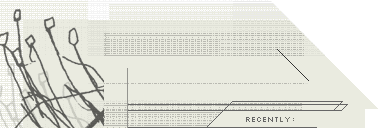For this incarnation of the Psychic Paramount, NYC
guitarist and composer Drew St. Ivany has assembled an
instrumental power trio, with his musical support
provided by fellow ex-Laddio Bolocko member Ben
Armstrong on bass and Tatsuya Nakatani on drums. The
result is as fierce an underground-rock artifact as
you could wish for, with primitive recordings of the
band on tour in Europe edited down to form monolithic
slabs of freestyle psychedelic rock.
The introductory fragment, recorded in Lyon, combines low-level guitar
rumbling with phased fluttering sounds. It's an abstract
teaser for what is to come as track two, "Paris Part
One," fades in with some frenzied, freeform guitar
soloing, a thunderously loud rhythm section and
low-end frequencies disappearing under an avalanche of
fuzzy distortion. "Paris Part Two" is all cavernous
reverb, with waves of distortion in the background,
like trance-techno interpreted by some monstrous
blues-rock band. What it lacks in hypnotic seduction
it more than compensates for in bludgeoning force. The following
combination of two live extracts recorded in Napoli
and Perpignan is a less forceful mixture
of oceanic abstraction and pulsating minimalism, only
really hinting at a greater intensity towards the
finish.
In a second track recorded in Perpignan the band
really hits the accelerator, blasting off with some
wild avant-rock that recalls The Stooges' "LA Blues"
— an extended cacophony of untethered noise
accompanied by bluntly hammered percussion. Then the
bass and drums kick into a powerhouse rhythm, sounding like a super-distorted
version of the
Mahavishnu Orchestra. The music's momentum seems
unstoppable, a rolling juggernaut of squally guitar
and bass distortion accompanied by the maelstrom of
Nakatani's drumming. There's a swift detour as the
music shifts to an oscillating pulse that struggles
to free itself from the background morass of fuzz
before the drums come thundering back in for the
finish. The final track, "Ex-Visitations," follows the
fusion/blues style of its predecessor, but has less of
a distorted edge, and gives plenty of space for
more astonishing drumming before it shifts down a gear
toward a less violent climax.
The rawness of these recordings, aided by some
judicious editing, works in their favor, transforming
what might otherwise be fairly unremarkable pieces of
music into vertiginous demonstrations of raw power. |

